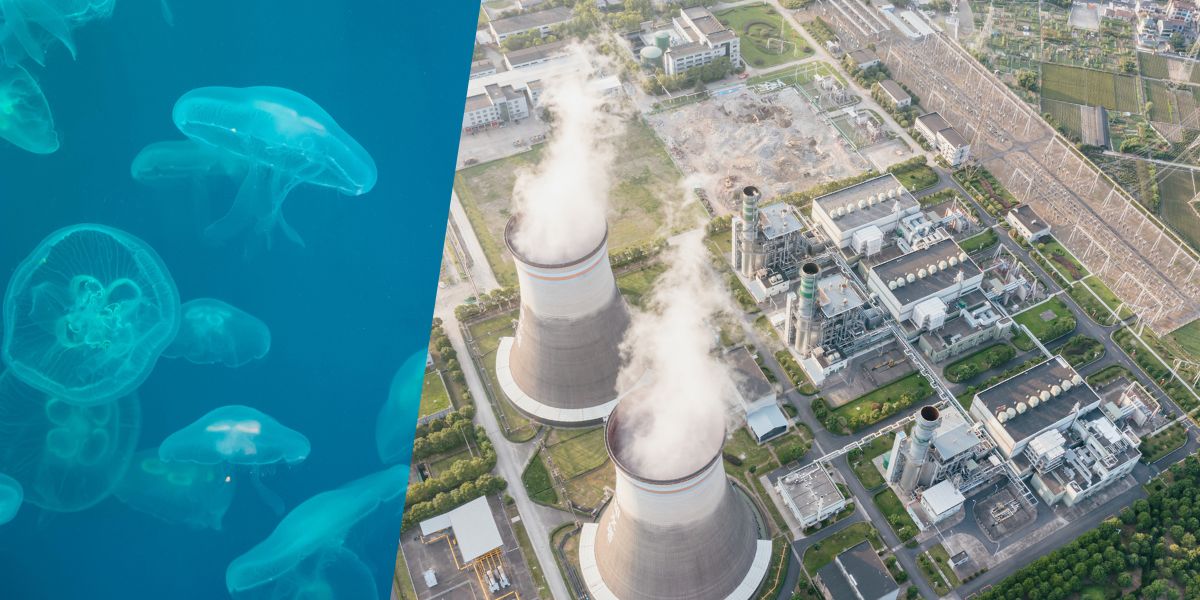Picture this: You’re running one of France’s biggest nuclear power plants when suddenly, alarms start blaring and emergency lights flash everywhere. Is it a cyber attack? Equipment failure? Nope – it’s jellyfish. Millions of them.
That’s exactly what happened at France’s Gravelines nuclear plant and it’s both hilarious and terrifying at the same time!

The Day Jellyfish Took Down a Nuclear Giant
The Gravelines nuclear plant isn’t some tiny operation – we’re talking about a massive facility with six reactors pumping out 5.4 gigawatts of power. That’s enough juice to keep 5 million homes running and provides about 6% of France’s entire electricity needs. Pretty important stuff!
But on August 10th, this nuclear powerhouse went from hero to zero faster than you can say “jellyfish invasion.” The plant’s cooling system, which sucks seawater in to keep those hot reactors from melting down, suddenly stopped working. The culprit? Asian moon jellyfish – those translucent little invaders originally from China, Japan, and Korea.
These sneaky jellies had completely clogged the plant’s debris filters, turning what should’ve been a smooth water intake into a gelatinous nightmare. Thankfully, the plant’s safety systems worked perfectly, automatically shutting everything down the moment sensors detected the blockage.
Why Are Jellyfish Becoming Nuclear Nightmares?
Here’s where things get properly concerning – this wasn’t a one-off weird incident. Jellyfish have been causing nuclear plant shutdowns around the world for ages! They’ve taken down plants in Japan, China, India, Scotland, and even Sweden. In the Philippines back in 1999, jellyfish caused a nationwide blackout that people initially blamed on the Y2K bug!
The real kicker? It’s getting worse thanks to climate change. As our oceans warm up, jellyfish are having the time of their lives, breeding faster and spreading to places they’ve never been before. Derek Wright from the U.S. National Oceanic and Atmospheric Administration puts it perfectly: “Jellyfish breed faster when water is warmer, and because areas like the North Sea are becoming warmer, the reproductive window is getting wider and wider.”
So these Asian moon jellies that arrived in the North Sea around 2020 are now thriving in waters that used to be too cold for them. They’re basically the ultimate invasive species success story – if success means potentially causing nuclear disasters!
The Jellyfish Threat Is Real (And Getting Bigger)
What makes this whole situation even weirder is what happens when these jellies die. They don’t just float away – they literally liquefy, which means they could slip past filters and get into the actual reactor systems. That’s a whole different level of “we’ve got a problem.”
The fact that nuclear plants around the world are dealing with this issue shows just how adaptable and persistent these jellyfish swarms can be. From Scotland’s Torness plant getting hit twice (2011 and 2021) to Sweden’s massive Oskarshamn reactor going down in 2013, it’s clear that jellyfish vs. nuclear power is becoming a regular battle.
The good news? Plants like Gravelines prove that safety systems work exactly as they should. The bad news? With warming oceans and expanding jellyfish populations, we might be seeing a lot more of these bizarre shutdowns in the future. Who knew that some of the world’s most advanced technology could be brought to its knees by brainless blobs of jelly!







